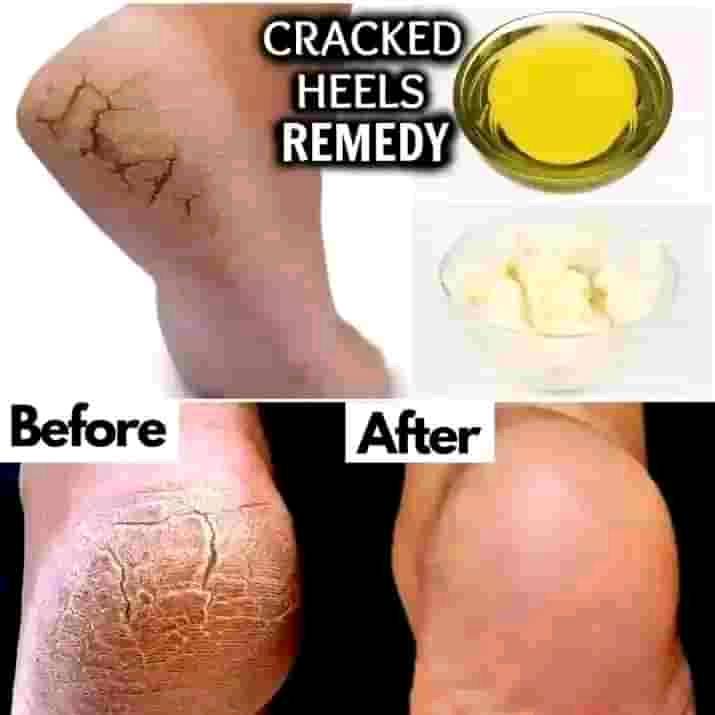Why It Works: Exfoliating removes the dead, hard skin that builds up on your heels, which is often the cause of cracks.
- How to Do It:
- Use a pumice stone, foot file, or exfoliating scrub to gently rub the rough areas of your heels.
- Focus on the thickest parts of the skin, but avoid scrubbing too hard, which can cause irritation.
- Rinse your feet with warm water to remove any remaining dead skin.
- Pro Tip: Exfoliate your feet 2-3 times a week to keep the skin smooth and prevent cracks from forming.
3. Moisturize Deeply
Why It Works: Moisturizing is crucial for keeping your heels soft and preventing dryness that leads to cracking.
- How to Do It:
- Apply a thick, hydrating cream or lotion immediately after exfoliating. Look for products that contain ingredients like urea, shea butter, glycerin, or hyaluronic acid.
- For an intense treatment, apply a generous amount of moisturizer to your heels before bed, then cover your feet with cotton socks overnight.
- Pro Tip: For extremely dry heels, consider using petroleum jelly (like Vaseline) or a specialized heel balm that contains salicylic acid or alpha hydroxy acids to lock in moisture.
4. Use a Foot Mask or Overnight Treatment
Why It Works: Foot masks and overnight treatments provide intensive hydration and repair for severely cracked heels.
- How to Do It:
- Apply a thick layer of a foot mask or an overnight treatment cream designed specifically for cracked heels.
- Wrap your feet in plastic wrap or wear special moisturizing socks to keep the treatment in place.
- Leave it on overnight and rinse off any residue in the morning.
- Pro Tip: Foot masks with natural ingredients like honey, aloe vera, or coconut oil can soothe and repair dry, cracked skin.
5. Protect Your Heels During the Day
Why It Works: Preventing further damage to your heels is essential in the healing process.
- How to Do It:
- Wear comfortable, well-fitting shoes that cushion your heels and avoid walking barefoot on hard surfaces.
- If you need additional support, consider using silicone heel cups or pads to protect your heels from friction and pressure.
- Pro Tip: Avoid wearing open-back shoes or sandals that expose your heels to dryness and environmental elements.
6. Stay Hydrated and Maintain a Healthy Diet
Why It Works: Hydration and proper nutrition play a significant role in skin health, including the skin on your heels.
- How to Do It:
- Drink plenty of water throughout the day to keep your skin hydrated from the inside out.
- Eat a balanced diet rich in vitamins and minerals, particularly those that promote skin health like vitamins A, C, and E, as well as omega-3 fatty acids.
- Pro Tip: Incorporate foods like avocados, nuts, seeds, and leafy greens into your diet for their skin-nourishing benefits.
7. Prevent Cracked Heels with Regular Maintenance
Why It Works: Regular foot care prevents the recurrence of cracked heels and keeps your feet in optimal condition.
- How to Do It:
- Make foot care a part of your daily routine by moisturizing your feet every day and exfoliating regularly.
- Keep your nails trimmed and maintain proper hygiene to avoid infections that can worsen cracked heels.
- Pro Tip: Consider visiting a podiatrist or professional pedicurist if your cracked heels persist or if you have underlying health conditions like diabetes that require specialized care.
Final Thoughts
Cracked heels can be a thing of the past with consistent care and attention. By following these simple steps, you’ll not only heal your current cracks but also prevent new ones from forming, leaving your feet soft, smooth, and healthy. Remember, the key to saying goodbye to cracked heels is regular care, hydration, and protection.
This guide provides a comprehensive approach to treating and preventing cracked heels, ensuring you can keep your feet looking and feeling their best.
